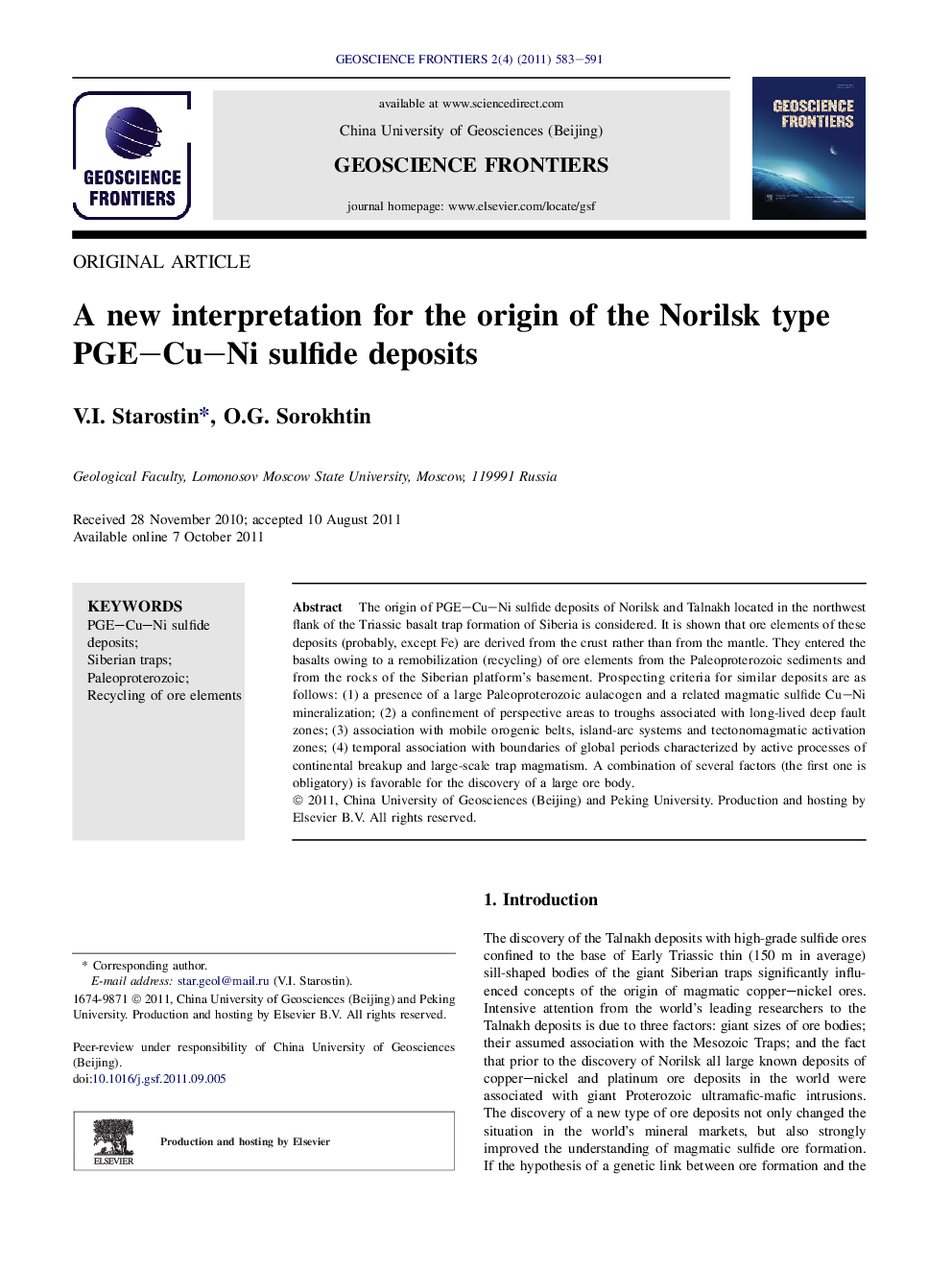| Article ID | Journal | Published Year | Pages | File Type |
|---|---|---|---|---|
| 4681814 | Geoscience Frontiers | 2011 | 9 Pages |
The origin of PGE–Cu–Ni sulfide deposits of Norilsk and Talnakh located in the northwest flank of the Triassic basalt trap formation of Siberia is considered. It is shown that ore elements of these deposits (probably, except Fe) are derived from the crust rather than from the mantle. They entered the basalts owing to a remobilization (recycling) of ore elements from the Paleoproterozoic sediments and from the rocks of the Siberian platform’s basement. Prospecting criteria for similar deposits are as follows: (1) a presence of a large Paleoproterozoic aulacogen and a related magmatic sulfide Cu–Ni mineralization; (2) a confinement of perspective areas to troughs associated with long-lived deep fault zones; (3) association with mobile orogenic belts, island-arc systems and tectonomagmatic activation zones; (4) temporal association with boundaries of global periods characterized by active processes of continental breakup and large-scale trap magmatism. A combination of several factors (the first one is obligatory) is favorable for the discovery of a large ore body.
